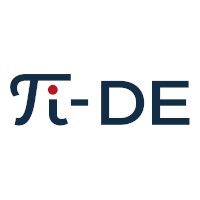E2.2 – Optical spectra and electronic structure of adsorbed pi-conjugated molecules
Principle Investigator: Prof. Thomas Bredow
The project aims at an understanding of adsorption and ordering effects on the electronic structure and optical spectra of pi-conjugated molecules on the basis of solid-state quantum-chemical calculations. Adsorbate structures will be calculated with a multilevel approach consisting of semiempirical methods, machine-learned force fields and DFT, employing global minimum search algorithms. The electronic density of states, core-level spectra, STM images, and optical absorption spectra will be calculated with advanced solid-state quantum-chemical methods as implemented in WEST and VASP and compared to experimental spectra obtained in projects C1.2 and C3.2. The molecules suggested in Focus Area A will be adsorbed on thin h-BN and phosphorous layers supported on metal surfaces. Various adsorption modes will be considered, in particular sub-monolayers and monolayers with different degrees of order. The number of h-BN/phosphorous layers will be varied to analyze the decoupling of molecular and support electronic states. Optical spectra are calculated with GW-BSE methods, band structures and other one-electron properties will be obtained at hybrid DFT level.
In the first funding period we studied optoelectronic properties of the merocyanine HB238 [1], and monolayer formation of HB238 on the Ag(100) surface [2,3].
References
[1] R. Tomar, L. Bernasconi, D. Fazzi, T. Bredow, A Theoretical Study on the Optoelectronic Properties of Merocyanine Dyes, J. Phys. Chem. C, under review
[2] A. J. Kny, M. Reimer, N. Al-Shamery, R. Tomar, T. Bredow, S. Olthof, D. Hertel, K. Meerholz, M. Sokolowski, Chiral self-organized single 2D-layers of tetramers from a functional donor-acceptor molecule by the surface template effect, Nanoscale 2023, 15, 10319--10329. DOI: 10.1039/D3NR00767G
[3] R. Tomar, A. J. Kny, M. Sokolowski, T. Bredow, Comparison of theory and experiment for ordered monolayers of HB238 merocyanine on Ag(100) J. Phys. Chem. C, submitted
The ideal candidate is highly motivated and interested in theoretical model development in collaboration with experimentalists in the field of surface science and application of solid-state quantum-chemical techniques. Experience with standard software, e.g. VASP, CRYSTAL, Quantum Espresso, and with scripting languages, e.g. Python, is beneficial.
